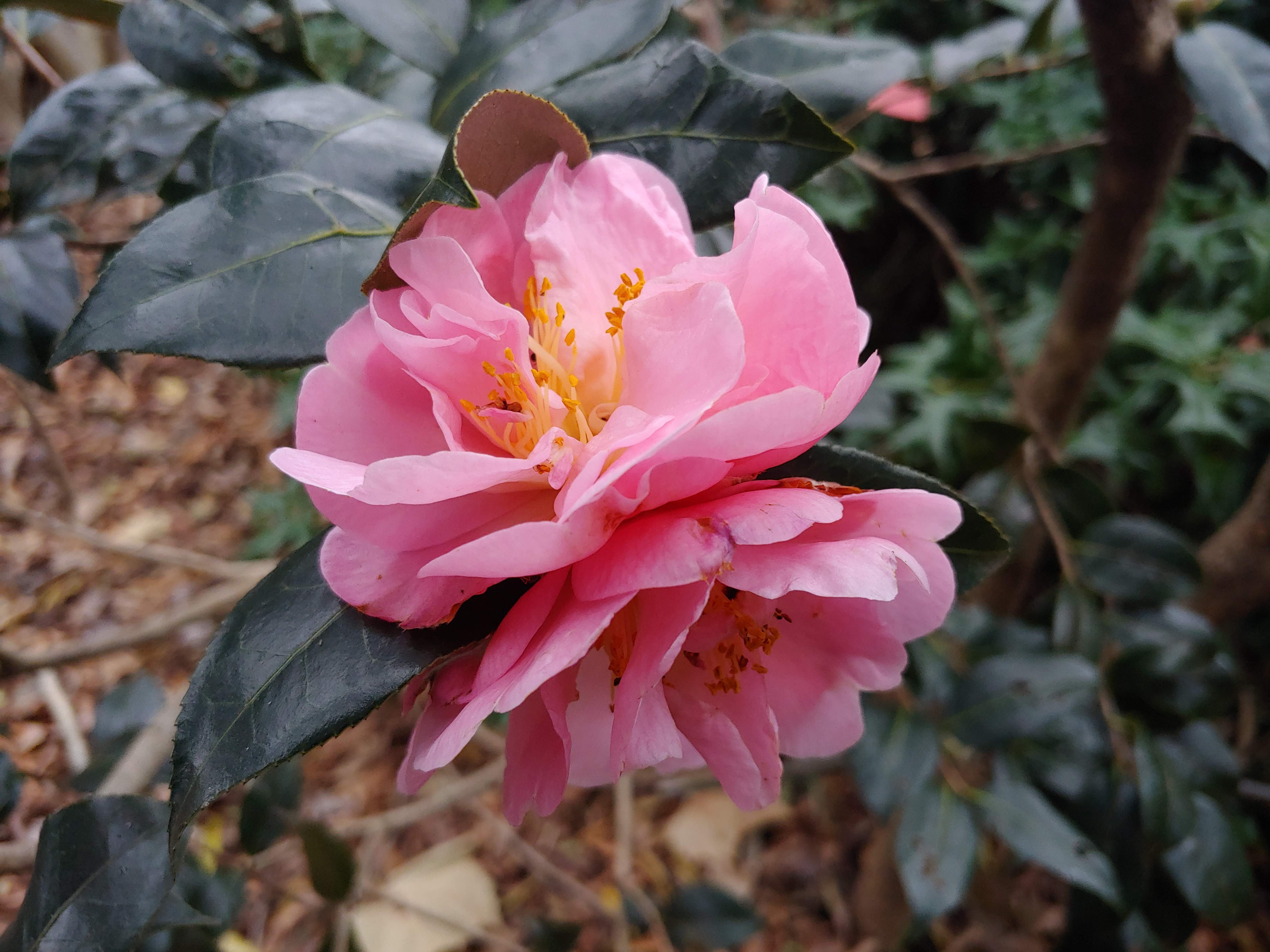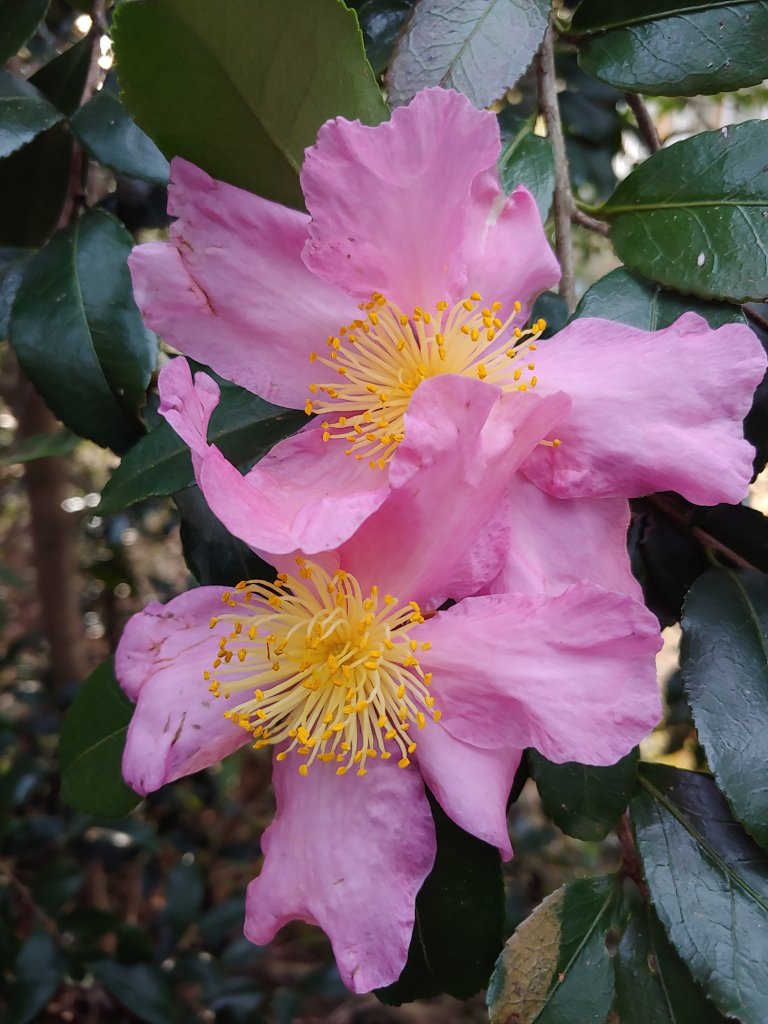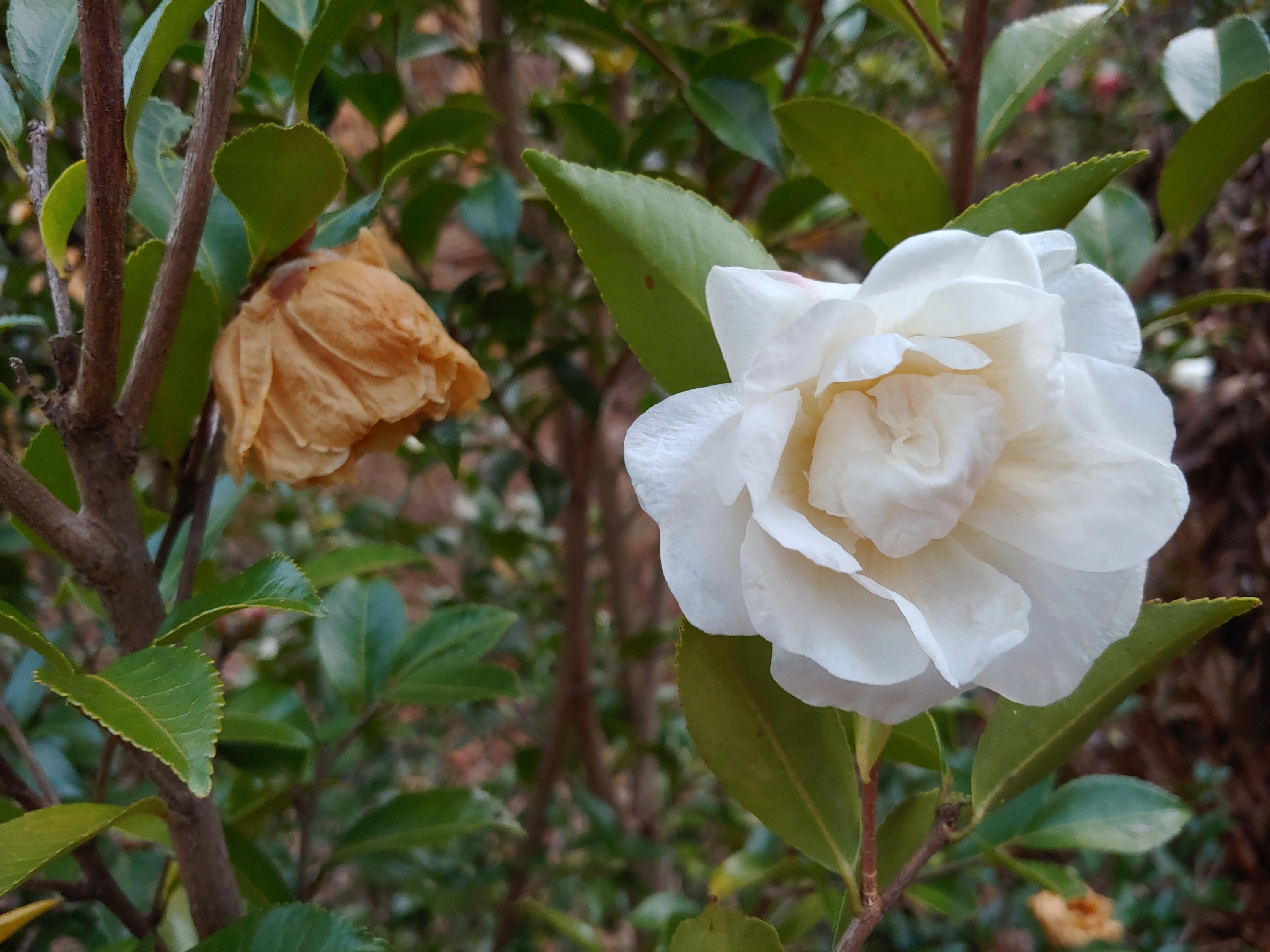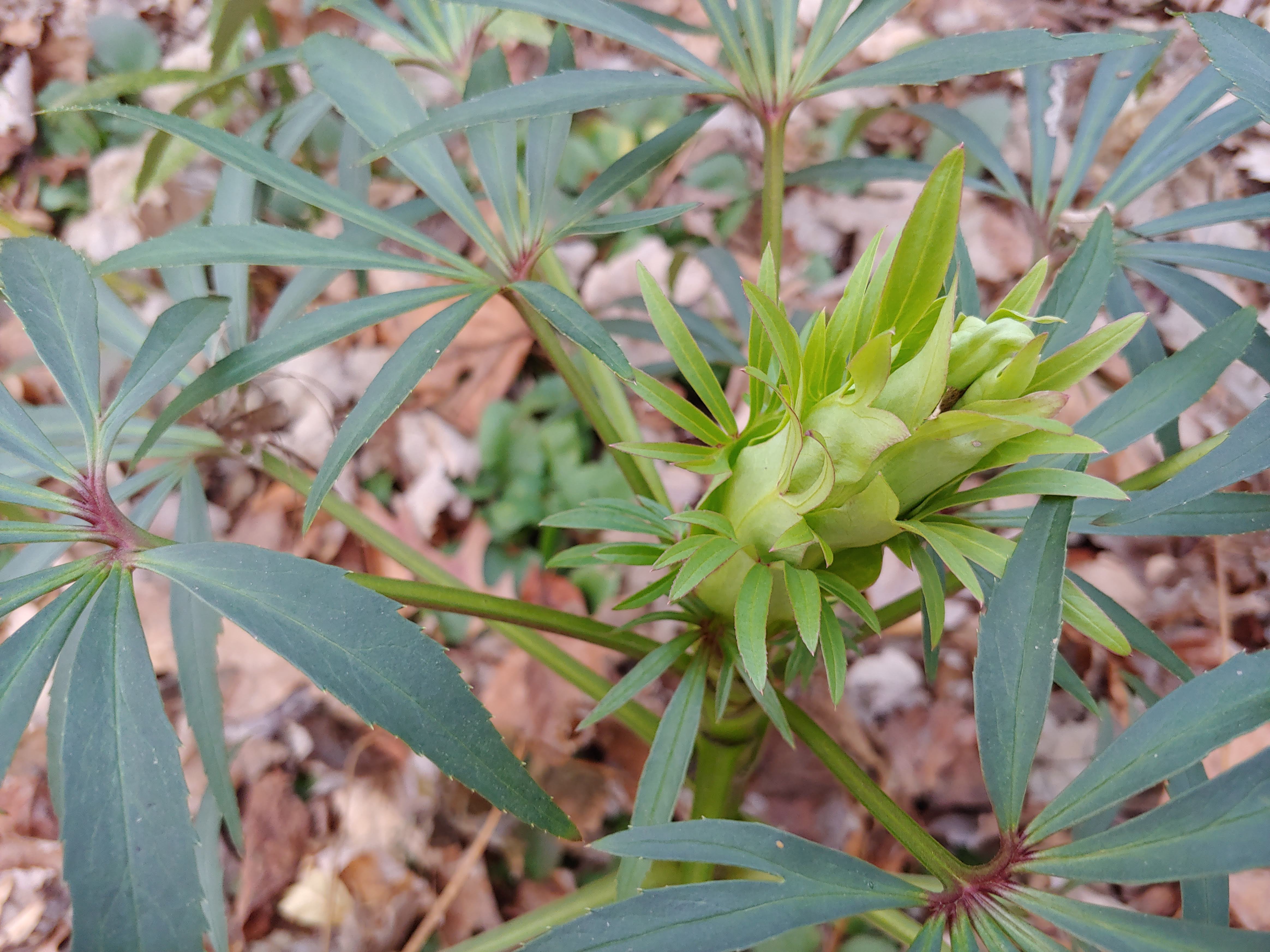For a second year, the autumn flowering camellias are particularly delightful at the beginning of December. Yes, browned, freeze damaged flowers that remain are unsightly, but there are many lovely pink or white blooms that look out of place in the mostly brown and bare winter garden.

A ‘Winter’s Star’ camellia (below) has only a few scattered flowers remaining, with its peak weeks ago, but a deeply shaded, double pink flowered ‘Winter’s Interlude’ (above) now displays its first blooms. I think these are its first flowers in several years, though each year it is heavily budded despite the shade of goldenrain and sourwood trees. The lack of sunlight delays flowering, then it is often too cold and buds wither by spring. A similarly shaded ‘Winter’s Star’ has not begun to flower, but this camellia is more exposed to the winter sun so that it flowers in spells of mild temperatures in January and February.


One white flowered camellia has multiple blooms, but its leaves are off color this year. I do not fertilize, depending on decaying leaves has worked for three decades, but this one will need a boost in the spring. It is the closest camellia to a shallow rooted cherry, which somewhat stunts its growth, but I am not concerned about survival, just that it’s not looking its best.

When deep piles of leaves are carefully removed, several hellebores are showing some color (above). I was influenced to remove leaves when an acquaintance shared photos of his hellebores with their first flowers. On occasion, buds will fully open before the new year on hybrids with Christmas rose (Helleborus niger) genetics, but there are rarely flowers on Lenten rose types until late January, and more typically mid February.

Too often, I must restrain my enthusiasm since the first bud break of early flowering hellebores, showing a glimpse of color, does not progress as quickly as expected. I will not be surprised if these partially opened buds do not flower until mid or even late January, though I hope for the more extended period with one variety or another blooming from December into March.
I think it is helpful to remove leaves that cover low, spreading hellebores, though the leaf clutter insulates from cold, it seems that sunlight exposure promotes earlier flowering. So, with this encouragement, here is one small project for the weekend. In most winters, freezing temperatures turn leathery leaves to brown, and viewing of flowers is enhanced by their removal, but this is a larger project for another day. Of course, leaves covering large portions of the garden will be left undisturbed to decay, with only paths cleared and leaves removed from hellebores and some low growing perennials.
And again today, it occurs to me that every garden should grow these sturdy, easy to grow late autumn and winter bloomers. Our skies are gray, and our gardens barren for too long without camellias and hellebores, and also witch hazels, snowdrops and others that will keep flowers in the garden throughout the winter. I will not claim that I am outdoors as often or for as long in the cold of winter, but there are flowers and other wonders to be seen every day despite the chill.